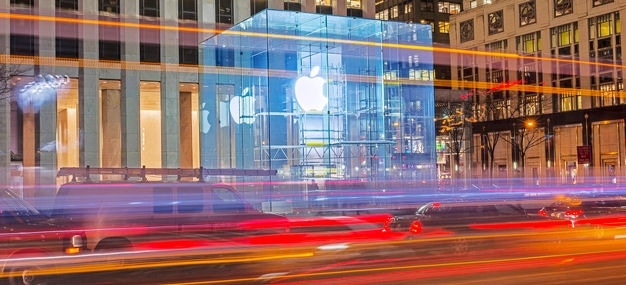China plummeting and India soaring but Apple just can’t get a break
IDC had a stab at smartphone shipments in two of the worlds most lucrative markets, and it does not make pleasant reading for Apple.
February 12, 2019

IDC had a stab at smartphone shipments in two of the worlds most lucrative markets, and it does not make pleasant reading for Apple.
As the Apple management team has now decided against dishing out the specifics on iPhone shipments in the quarterly statements, analysts are the closest we’re going to get for sales figures. Here, IDC is suggesting a sluggish market overall in China, with iPhone sales dropping considerably, while the Indian market is booming, but Apple can’t claim a slice of the action.
Starting with the Indian market, IDC estimates 142.3 million units were shipped across 2018, demonstrating a 14.5% year-on-year increase, though the final quarter saw a 15.1% sequential decline. This might not look as bad as it originally sounds however, as Q4 actually increased year-on-year 19.5%, suggesting the third quarter was just exceptionally positive.
“Amongst the big highlights of 2018 were the online-focused brands that drove the share of the online channel to an all-time high of 38.4% in 2018 and a whopping 42.2% in 2018Q4,” said Upasana Joshi of IDC. “This was primarily driven by several rounds of discounts by e-tailers driving affordability through various financing options, cashback offers and buyback schemes.”
The Jio effect is clearly sustainable across the country as Indian consumers appetite for the digital economy continues to grow. With the disruptive telco promising further expansion, greater digital inclusivity and additional services over the coming months, more consumers might be encouraged to upgrade to more premium devices. As Joshi notes, the premium end of the market was the fastest growing price segment, demonstrating 43.9% year-on-year growth.
What will be worrying for the iLeader is the inability to get a foothold in the market and capture the attention of Indian consumers. India is traditionally a market driven by low-end devices, however the encouraging growth of handsets priced north of $500 should offer some traction for Apple.
Xiaomi led the market, having recently overtaken Samsung, with 28.9% of total shipments, a healthy 58.6% increase from 2017. Samsung collected 24.7% of Indian devices sales, while Vivo had 10%, Oppo 7.2% and Transsion with 4.5% completes the top five vendors. The remaining 27% of shipments were shared through multiple vendors, Apple included, though the bundled peloton chasing the leading five saw total sales drop by 10.7% year-on-year.
With sales across the world seemingly declining for Apple, the booming Indian market is one it can ill-afford to miss out on. Last year, it announced it was moving manufacturing into the country, with partner Foxconn aiming to be up and running in early 2019, while there are also plans to expand the retail footprint. The team reportedly plan to open three massive stores in both Delhi and Mumbai, owing to the success of retail operations elsewhere around the world.
While India might be a headache due to the iLife indifference of the locals, China is turning into a full-blow migraine for completely separate reasons.
IDC estimate Apple’s smartphone shipments have declined by 19.9% in China, while the home favourite Huawei saw its own shipments grow by 23%. Apple’s loss is Huawei’s gain, though it does appear the iChief is losing its prestige badge in the market.
These figures are of course estimates, as Apple has decided against telling anyone about specific shipment numbers, though the revenues over the last quarter give a decent idea. During the last quarterly results, revenues for the Greater China region declined by roughly 26% from $17.9 billion to $13.1 billion. In years gone, Apple used to be able to simply release a new colour variant of flagships and China consumers would be queuing out the door, but the bonanza is over for the moment.
The big question is why? Of course, there will be a preference from some for local brands, and there will of course be the cash-conscious. But ultimately you have to wonder whether Apple is living up to the brand promise which it spend so many years cultivating; where is the innovation?
Over the last decade, Apple has crafted a brand which is built on the principles of innovation and technological supremacy. Steve Jobs was the figurehead of this image, and many Apple enthusiasts were prepared to pay the premium on devices because of this identity. However, in recent years, Apple has done little to differentiate its devices and justify the pricing premium which is placed on products. Of course, this is not just Apple, innovation has stuttered across the segment, but gone is the assumption Apple immune to market trends.
With revenues declining across the international markets, and Apple set to sit out the initial 5G devices euphoria over the next couple of months, 2019 is starting to look like a very uncomfortable year for Apple.
About the Author(s)
You May Also Like








.png?width=300&auto=webp&quality=80&disable=upscale)


_1.jpg?width=300&auto=webp&quality=80&disable=upscale)


.png?width=800&auto=webp&quality=80&disable=upscale)